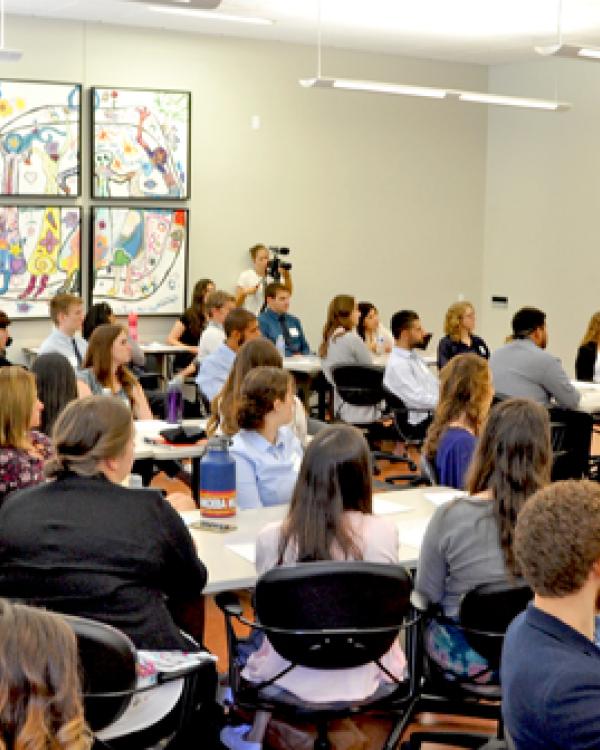
Tine Sloan addresses the 2016-7 cohort at their first meeting in July 2016
TSA. Most people, seeing that acronym, think Transportation Security Administration. But in the world of education those three letters hold a particularly ominous meaning, as they stand for Teacher Shortage Area. The US Department of Education has been keeping such a list since 1990 and the TSAs – simply defined as “an inadequate supply of elementary or secondary school teachers” – for each state have only grown in the past two decades. For instance, the list for California for 2016–2017 is Art/Music/Drama (K–Grade 12); Early Childhood Special Education (Ages 5–8); Special Education (Ages 5–21); Foreign Languages (K–Grade 12); Mathematics (Grades 7–12); Natural Sciences (Grades 7–12).
California, along with many of the nation’s largest states, has seen huge drops in those enrolling in teacher education programs. From 2010-2015 in California, enrollment fell 53 percent. The reasons for such numbers are almost as large as the drops themselves: teaching seems a less stable career, teachers and teachers unions have often been demonized of late, budget cuts seem to hit school districts hard. A November 2014 National Education Association survey reported that nearly 50 percent of all teachers are considering leaving the profession due to standardized testing.
In such an atmosphere, it’s all the more striking that UC Santa Barbara’s Teacher Education Program can claim a 25% increase in applicants for the 2017-18 school year, its highest total in six years. Those numbers are up in almost every area, too, from mathematics to the multiple subject credential (for K-6 teachers), from science to history/social sciences.
“Few programs provide the kinds of experiences, individual attention, and close collaborations with schools that we have here,” says Tine Sloan, director of the Teacher Education Program. “We place teacher candidates in classrooms for the full academic year so they learn about practice in practice. In the end, our graduates walk out of one of the most acclaimed programs in the country, and walk into their first year classrooms ready to teach. Our graduates are in high demand.”
Sloan certainly knows what makes good teacher ed; she is a recent recipient of a $1.5 Million UC President’s Research Catalyst Award and she will lead a nine-campus research consortium focused on teacher preparation and training. What works at UCSB will soon get shared and get better.
The Teacher Education Program at UC Santa Barbara’s Gevirtz School offers the Multiple- Subject, the Single-Subject, and the Education Specialist Moderate/Severe Teaching Credentials with a Master's Degree in Education. These programs provide future teachers with a solid theoretical foundation integrated with extensive fieldwork that leads to both a California State Teaching Credential and a Master's Degree in Education. The programs are run as a cohort, with the elementary and secondary cohorts no larger than 60 students each. This allows for the individualized attention necessary for high-level preparation of reflective, skilled practitioners who can meet the needs of a diversity of learners in California schools. The Teaching Credential Programs are full-time, post-graduate programs that begin in June and conclude the following June. Teacher candidates have the option to work on the Master’s Degree concurrent with credential coursework. It is one of the highest quality programs in the nation, with state-of-the art practice grounded in partner schools, a focus on teaching to reach all learners, and teacher educators with established records of success.